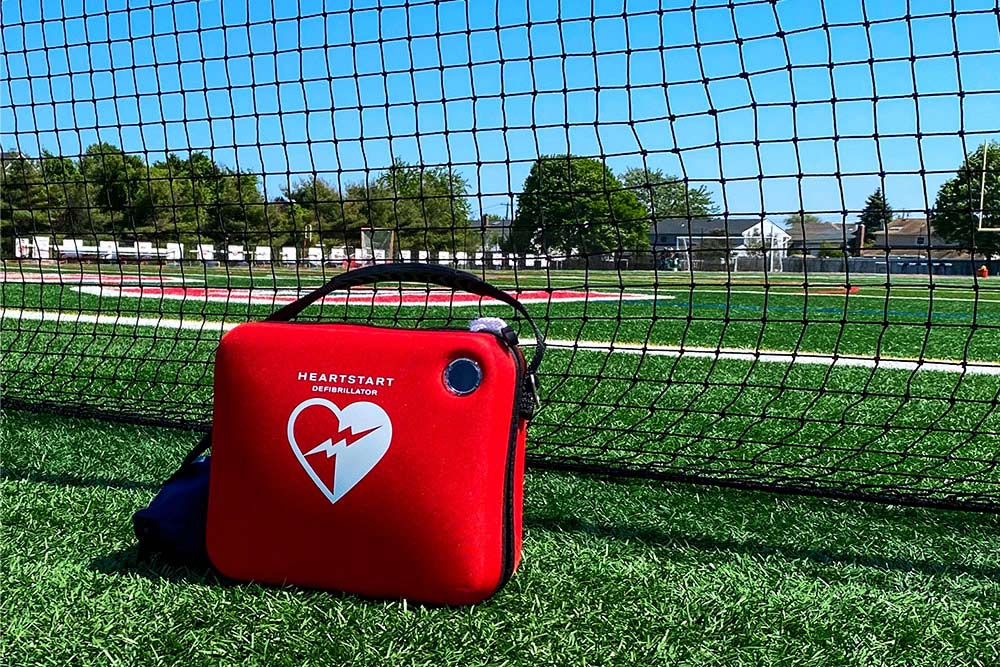
Every day 200 people in the UK suffer a sudden cardiac arrest. A very small percentage survive.
Unfortunately, children, who we presume to be fit and healthy, are not immune from this.
Sudden cardiac arrest gives no warning. It can happen anywhere – at home, the park and even school. In fact, around 270 children die from sudden cardiac arrest at school each year.
Access to defibrillators in schools can considerably increase the chances of pupils, teachers, school employees and visitors surviving a sudden cardiac arrest. But up until recently, there were not many schools with one.
However, following a recent government rollout of these lifesaving devices, UK parents and educators can rest assured that a defibrillator is not far from the classroom. In this blog, we applaud the government’s commitment to ensuring lifesaving defibrillators are in all state-funded schools. We examine why this is important and flesh out what this initiative involves.
What Is Sudden Cardiac Arrest?
Cardiac arrest is “the sudden loss of all heart activity due to an irregular heart rhythm.” It’s when the heart stops, and blood or oxygen stops pumping around the body. It’s sometimes referred to as sudden cardiac arrest or sudden cardiac death.
Sudden Cardiac Arrest in Young People
Sudden cardiac arrest in children and young people is rare. But when they do happen, they are really worrying.
Last week Bronny James, the eldest son of arguably one of the greatest basketball players of all time – LeBron James – suffered a sudden cardiac arrest. He was taking part in a training session at university. Immediate, lifesaving CPR was performed, and thankfully after a few days in the hospital, he returned home to his family.
Sadly, some families aren’t so lucky. Mark King tragically lost his son after the 12-year-old suffered a sudden cardiac arrest during a swimming lesson at school in 2011. Mark has campaigned for a defibrillator in schools nationwide ever since through the Oliver King Foundation, named for his son.
A meeting with Mr King last year prompted the government to take action. Working with charities and experts, including the British Heart Foundation, they looked into the scale of need for devices across UK schools.
Why Are Defibrillators Important for Schools?
When used in the first minute of cardiac arrest, survival rates can be as high as 90%. If used within the first 3-5 minutes, research shows that a defibrillator can increase the chances of survival from just 9% to 50%. This is why it’s vitally important that defibrillators are accessible in schools.

Placement is just as important. Sports halls and playing fields are the best places to keep defibrillators in schools because children are most active in these areas.
The Government’s Defibrillator Scheme
In a £19 million rollout, the UK Government has upheld their July 2022 commitment to ensure all state schools have access to a defibrillator. Over 20,000 defibrillators have successfully been installed in almost 18,000 schools since January 2023.
This past June, the milestone of all defibrillator deliveries to all secondary schools was met. Now eligible primary, special and alternative provision schools will receive a defibrillator if they don’t already have one.
Plugging the Gaps
Many UK schools already have defibrillators, but some still don’t. The aim of this initiative was to identify any gaps and provide devices where needed. A survey will be sent out soon to all state-funded schools to check whether they still need the device.
It’s estimated that around 20,000 more devices will be needed. The aim is that by the end of 2024, every state school will have at least one defibrillator on site. Larger schools may have two devices.
What Else Is the Government Doing About First Aid in Schools?
Alongside the rollout of tens of thousands of lifesaving defibrillators, the government is pushing existing requirements for first aid to be taught as part of the school curriculum. This includes how to deliver CPR and how to use a defibrillator.
These are lifesaving skills that pupils can take with them after school.
Learn How to Use a Defibrillator
Defibrillators are pretty straightforward, but using them in an emergency can be daunting. Gain confidence on how to use a defibrillator with our e-learning course. You will learn about the different types of defibrillators, their prime functions and, most importantly, how to work one.
And while you are here, check out this handy free poster on how to use a defibrillator. You can publish it on your intranet, print it out and pop it up around your premises, or even share it in the family group chat. Spreading the word could save a life.





























































































































































































































































































































































































































































































































































































































































































































































